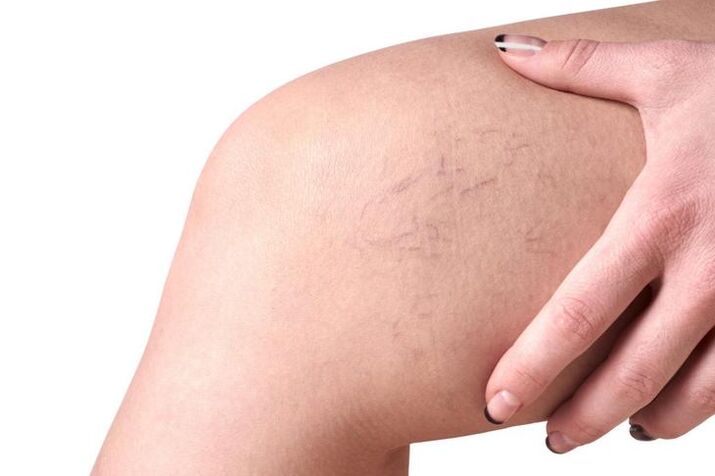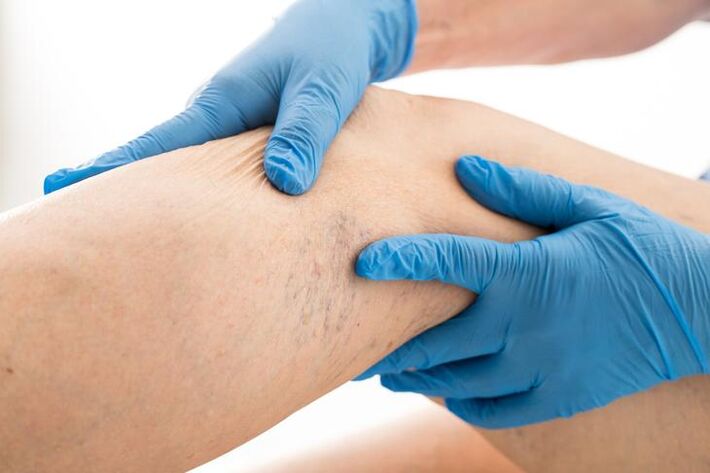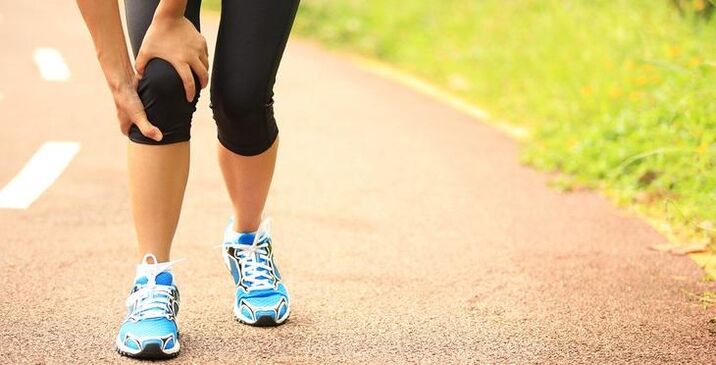Varicose veins are a disease that is accompanied by enlargement of the subcutaneous vessels or veins that are located under the skin of the human body.
With this disease, the walls of the veins lose elasticity when varicose nodules appear, they expand, creating blood stagnation, most of them are visible on women’s legs. They are the ones who suffer from the disease most often. The disease can appear from the age of 20, but is more common in middle-aged women. Men also get sick, but much less frequently.

ᲛReasons
Sometimes the cause of varicose veins is frequent use of alcohol. Alcohol itself causes vasodilation, but if abused, it will lead to unintended consequences.

Young girls who love to sit cross-legged for hours are also at risk of developing the disease. Blood stagnation occurs in this position of the legs, leading to interruption of the natural body’s natural blood supply.
Key factors
What are the causes of varicose veins?
- Inheritance. If parents have weakened vein walls, then this may recur in children.
- High blood pressure can be the cause of the disease. Sometimes it is caused by a disorder of the hormonal system.
- Pregnancy is difficult for many women, especially at the end of gestation. At first, the disease is not manifested, but after childbirth, all the signs of the disease are on the face. The stress that women experience during childbirth has a strong impact on the location of the veins.
- Overloading the body with the work of physical muscles provides all the conditions for the development of the disease. This is common in athletes who train. A person must be able to properly adjust the load on the human body.
- People with sedentary jobs, particularly office workers, are prone to developing varicose veins.
- Standing on your feet is not better - it can also cause illness.
- Women who frequently use contraceptives with many hormones are at risk.
- Thigh joint disease or previous trauma can lead to the development of the disease.
- Overweight people most often have varicose veins. They have a constant load on the venous system.
- Misuse of tanning, frequent sauna and alcohol consumption cause the same situation.

Varicose veins are much easier to prevent than to cure. You just have to be guided by a healthy lifestyle, pay attention to good physical training, plus a normal diet. In this case, there is a high probability of preventing varicose veins.
How are varicose veins manifested in the legs? The first signs from the photo

Typically, various symptoms of varicose veins may appear at an early stage, at which time the disease is still curable.
Typically, people rarely think about tired legs in the evening, swelling or varicose veins. If the symptoms appear too sharply, then we are talking about a neglected disease.
Early manifestations of varicose veins
It is usually not so easy to identify the early stages of varicose veins. This is due to the fact that varicose veins have huge symptoms and few people pay attention to them. People ignore leg swelling and fatigue. This is especially true for pregnant women: often varicose veins are not given much importance and it is considered that such a complication during pregnancy is quite normal.
Indeed, the cause of varicose veins can be considered as very large body weight, but usually the kilograms disappear after the baby is seen, but it also happens that a woman who suffered from varicose veins during pregnancy can not get rid of this disease at birth. This is often due to the fact that being overweight causes venous diseases.
Early symptoms of varicose veins are easily noticeable: the legs begin to get tired quickly from any physical activity, numb if they are in one position for a long time. But, as a rule, rarely does anyone pay attention to this, believing that pain in the legs after overcoming long distances is normal. In winter, a lot of pain is attributed to the presence of heavily insulated shoes on the feet, while in summer the cause is fever. However, this is just an excuse and there is no truth in it.
We should consider the earliest symptoms of varicose veins that can be detected at the time of contact with a specialist: leg fatigue after a little physical exercise or pain after wearing heavy shoes, often women who wear heels, experience pain, burning sensation in the legs in the evening, fatigueDeterioration of ability to work. If the disease is neglected, then the first sign of varicose veins is ulcers.
Diagnosis

From the very beginning of the detection of varicose veins it is necessary to examine the veins to determine the presence of pain, tension, density, sections of the affected vein, swelling and inflammation inside them. The specialist who conducts this examination is called a phlebologist. What to do at the first signs of varicose veins on the legs? First of all, it is necessary to diagnose the severity of the disease.
During the procedure, the patient should be held upright so that the veins are filled with blood as much as possible. It is best if the diagnosis is made in the evening - this will allow the affected areas to acquire a more pronounced contour. With the help of palpation and superficial examination the specialist can get the first information about the condition of the patient vessels. After the preliminary examination, the second stage of the diagnosis of varicose veins begins - examination with the help of ultrasound.
Tests for the diagnosis of varicose veins are an important source of information that helps to correctly diagnose the disease.
What tests are done if you suspect varicose veins?
The first test is a blood test for hormones, biochemistry and hemoglobin. A general blood test is also performed to determine its group and Rhesus, an infectious group.
The patient should then undergo a urine test to determine hemoglobin, sugar, ketone bodies, and this test also determines the acetone and ammonia in the patient's urine.
Ultrasound procedure
With the help of ultrasound or ultrasound examination of the veins, you can examine the venous system from the inside and find foci of disease. This procedure lasts no more than half an hour while the patient is in a horizontal position.
Treatment
This disease is very dangerous and is widespread throughout the world, depending on the stage of the disease, different methods of treatment are used.
To treat the first signs of varicose veins in the legs, you should consult a phlebologist, after examination he will make the correct diagnosis, you can not treat this disease on your own. If timely treatment is not carried out, patients may die.
Methods of treating the first signs of varicose veins in the legs:
- Sclerotherapy;
- Medical treatment;
- Medicinal plants;
- Compression underwear;
- surgery.
Traditional methods

They are used only in complex treatment with drugs, you need to take nettle, acacia tinctures. These tinctures are drunk three times a day before meals, it is useful to make cool foot baths from decoctions of burdock, nettle and birch leaves.
All suggested herbal preparations are taken only with the permission of a doctor; It is not recommended to drink decoctions and tinctures independently.
Medication treatment
Used medicines that have a tonic effect on the veins and are sold in pharmacies in the form of ointments and gels.
To make the use of ointments effective, it is also recommended to wear compression underwear.
Compression underwear
This range includes tights, socks, different stages of varicose veins, different compression of linen defined. You can buy such healing tights in specialty stores.
This underwear helps to normalize venous blood flow, the necessary compression force restores the normal functioning of the veins.
Taking medication does not completely cure varicose veins, but relieves some of the symptoms and promotes the course of the disease. Also, the use of various medications reduces the risk of developing diseases such as thrombophlebitis. This disease occurs due to the lack of treatment for varicose veins, it is treated only in a hospital and often requires surgery.
Also, for treatment I often use lymphatic drainage massage, thanks to the use in the general course of therapy, the patient's lymph drainage in the legs is improved, swelling is reduced, fatigue and heaviness disappear in the legs. The only downside is the massage effect. This will only last for two months, but then the massage course can be extended.
Sclerotherapy

This type of treatment is used when surgery is needed, but this procedure is different from surgery. A special medicine containing thrombosis is injected into a vein.
This drug works so that the top layer of the affected vein is destroyed, then it sticks to each other. Then, after 1. 5 years, this vein opens in the human body, other veins begin to perform its working functions.
The drug is prescribed by a phlebologist, individual treatment is used for each patient. The course of sclerotherapy includes 3-6 procedures, after a certain period of 2 to 8 weeks the doctor will be able to determine how this treatment worked.
This procedure can be performed only by experienced specialists, because if the procedure is performed incorrectly, the vein restores its blood flow through the sclerosed vessel and will not have a therapeutic effect.
In addition to taking medication, when using this procedure, micro foam is injected intravenously. The accuracy of this procedure requires an ultrasound scanner, which allows the doctor to see the movement of the needle on the screen and the process of distributing the drug with it.
In more severe cases, when massage, compression underwear, medications do not help and the disease progresses to a more severe stage, such patients are prescribed surgeries.
Consequences of varicose veins

The outcome of the disease is not good, it is a cosmetic problem and is associated with other health problems that have arisen as a result of varicose veins. Most affected are women who want their legs to look beautiful and skinny. With the onset of the disease this is impossible, but the cosmetic problem is not the main one. Varicose veins cause more tangible health problems.
Most often, there is pain in the legs, accompanied by an unpleasant itching. Acute pain is caused by insufficient oxygen and other trace elements that cannot move to the affected side. The cause of the pain is damage to the large veins. But small vessels also give unpleasant sensations.
Of course, for women, the cosmetic problem is also important, but the more unpleasant consequences are swelling of the ankles. The pain goes to the lower and lower extremities. Even during good rest a person feels constant pain.
Dermatitis - the result of varicose veins
The worst outcome is dermatitis. The disease develops in the areas of varicose veins. With such a disease, a person experiences constant itching, wound formation and the appearance of various rashes. The onset of dermatitis can lead to thrombophlebitis. When a blood clot appears, you should seek professional help immediately. If this is not done, then the consequences for a person can be very serious. Therefore, it should not be delayed under any circumstances.




































